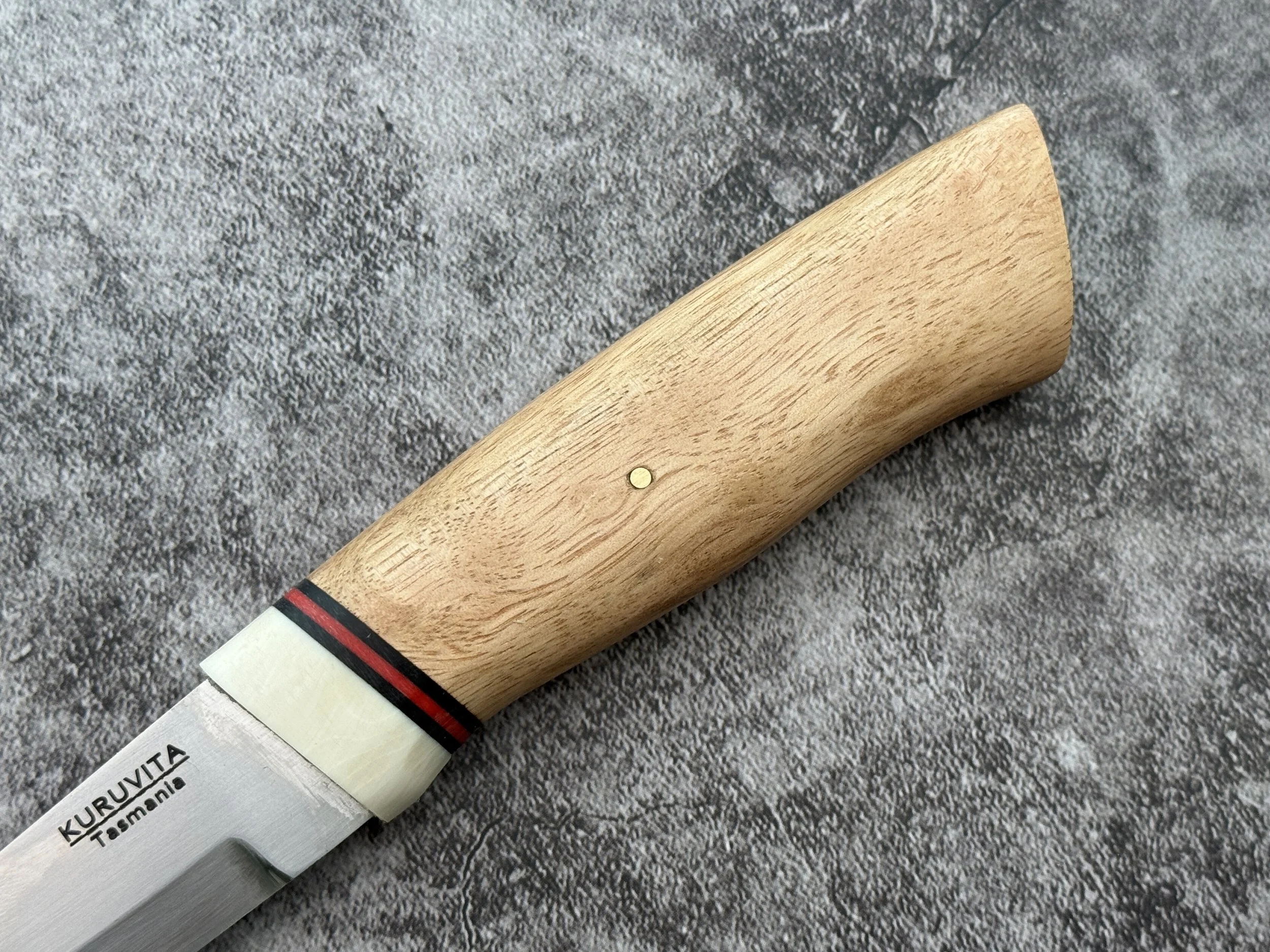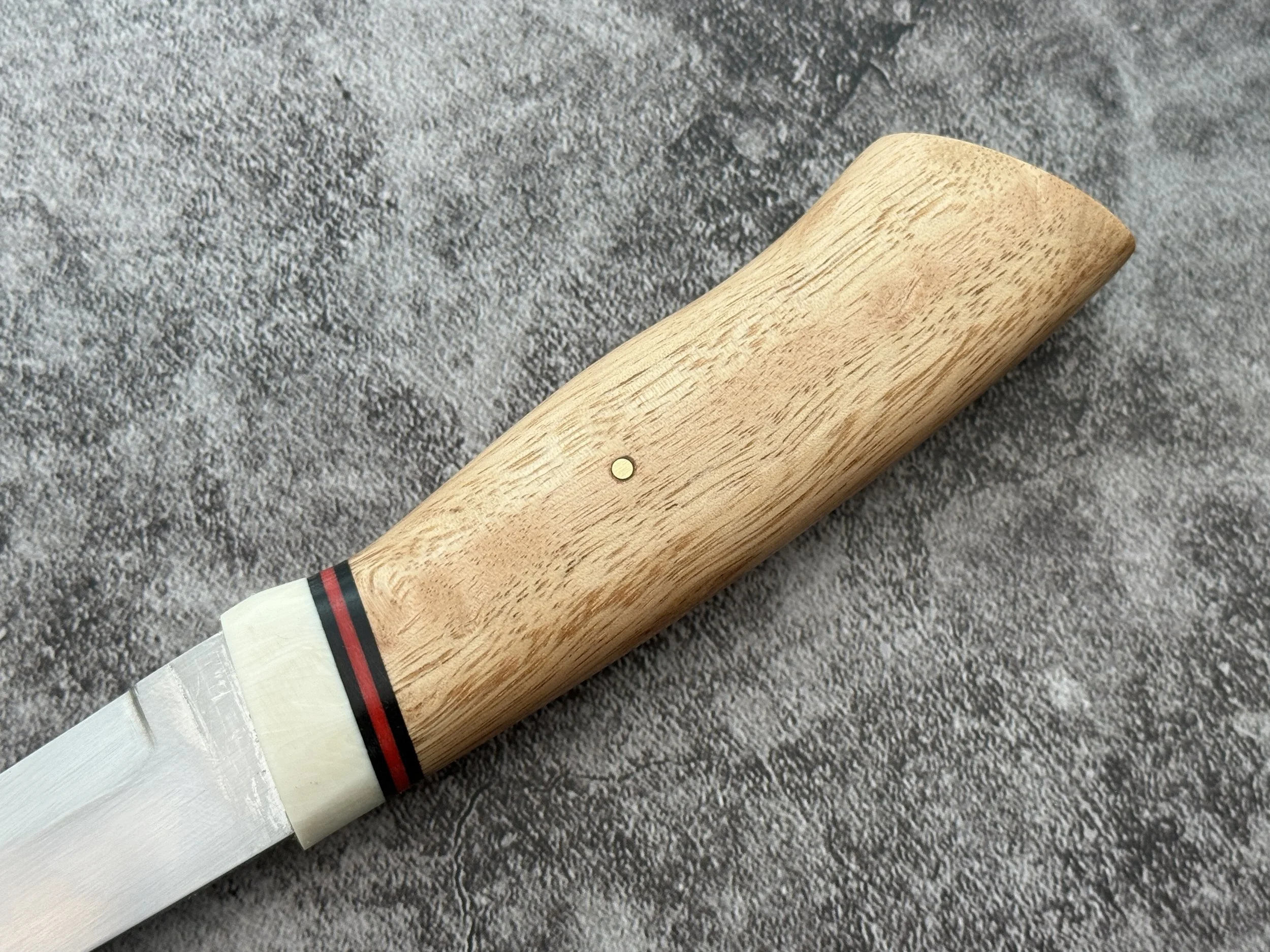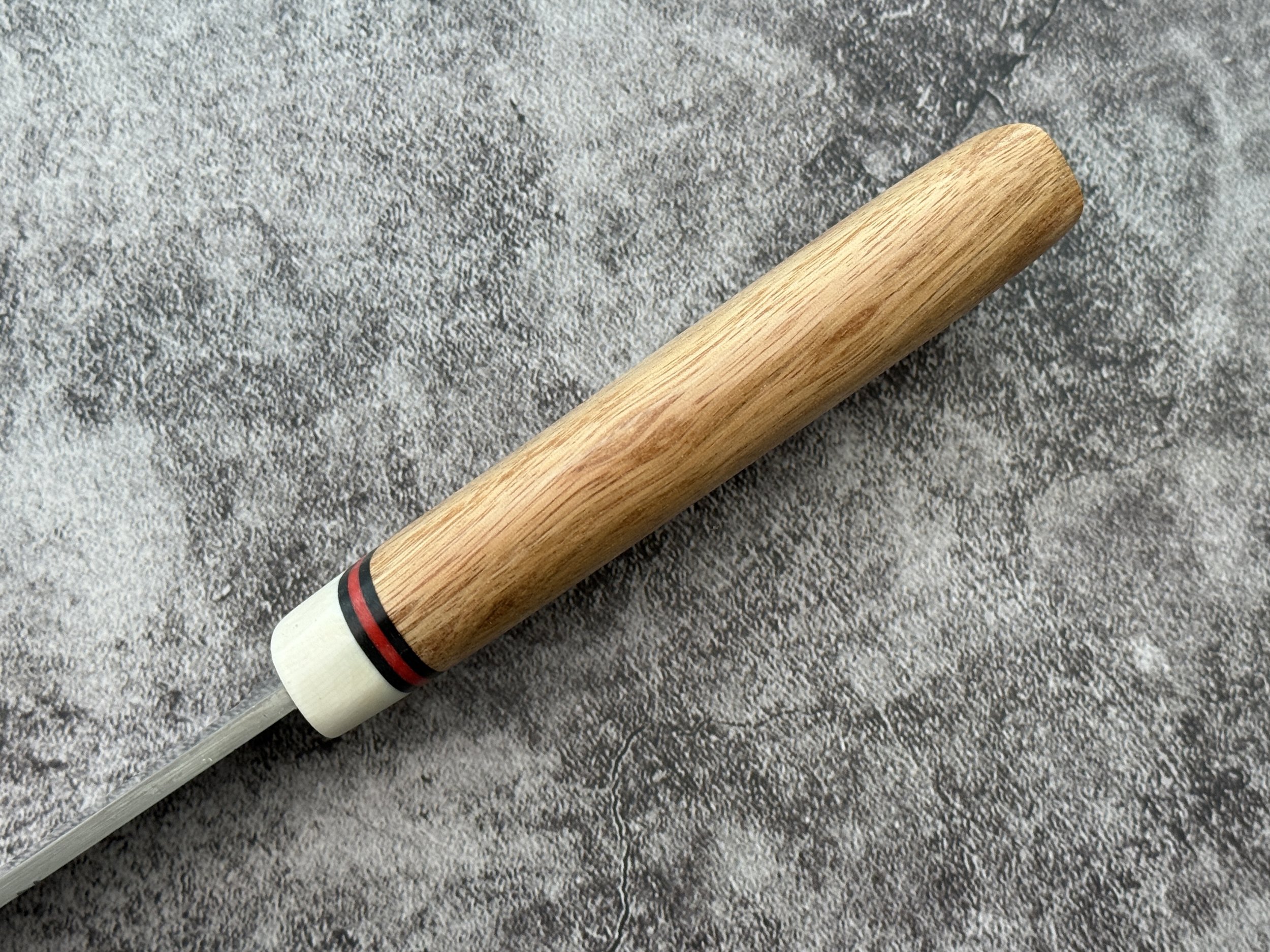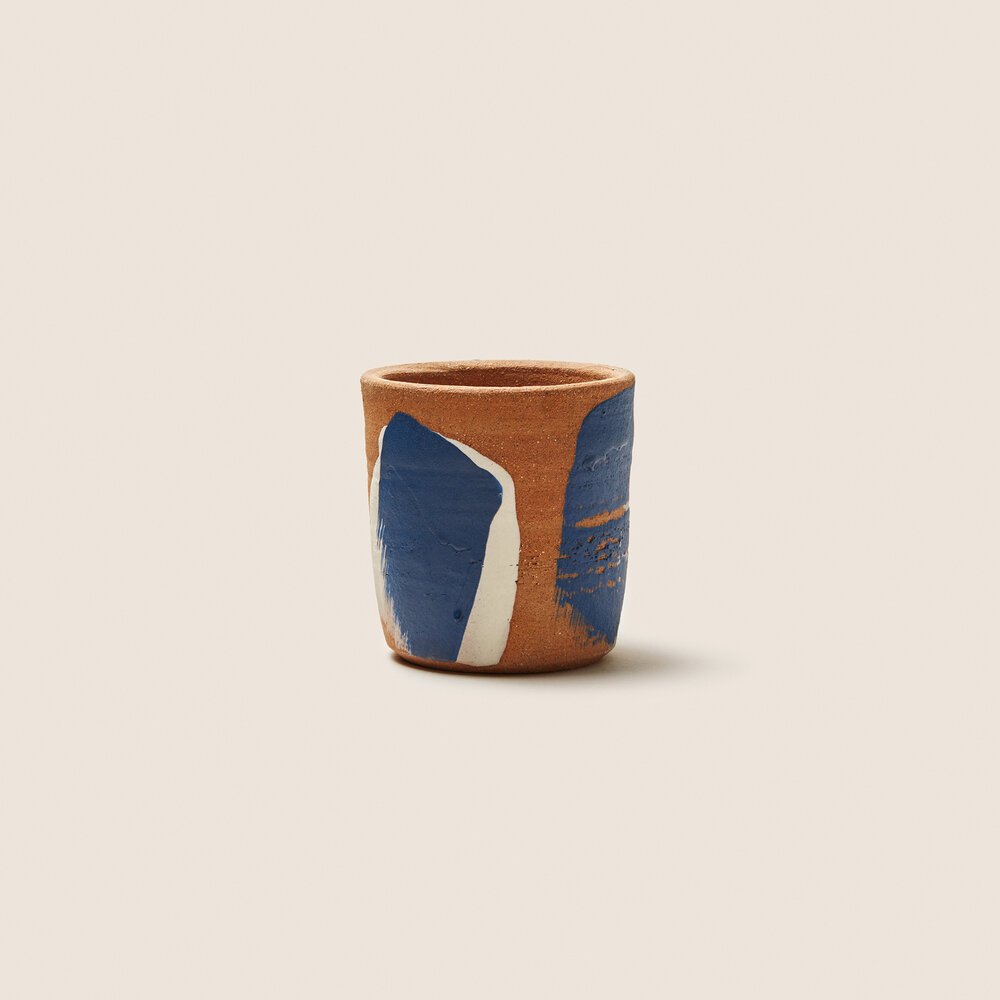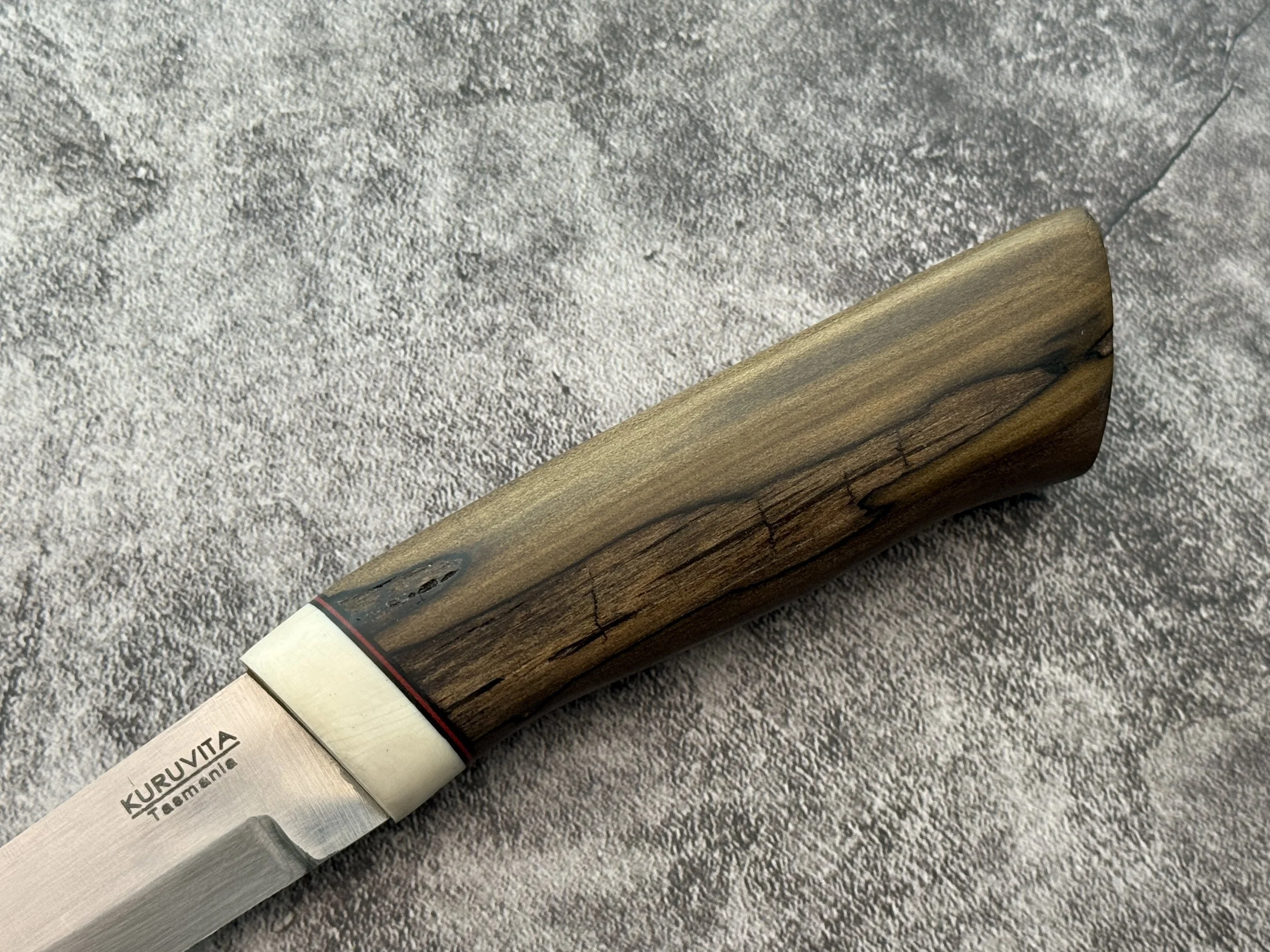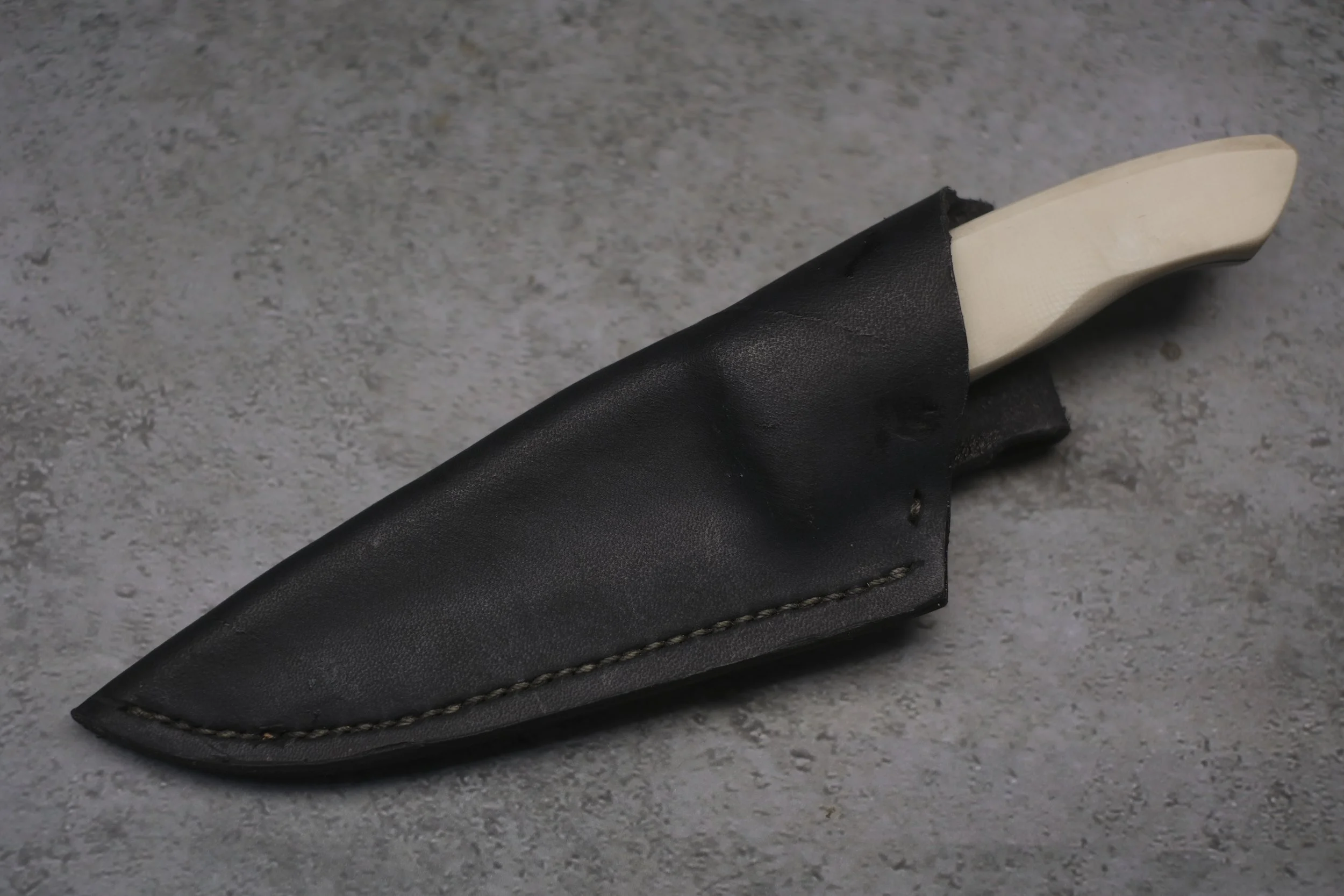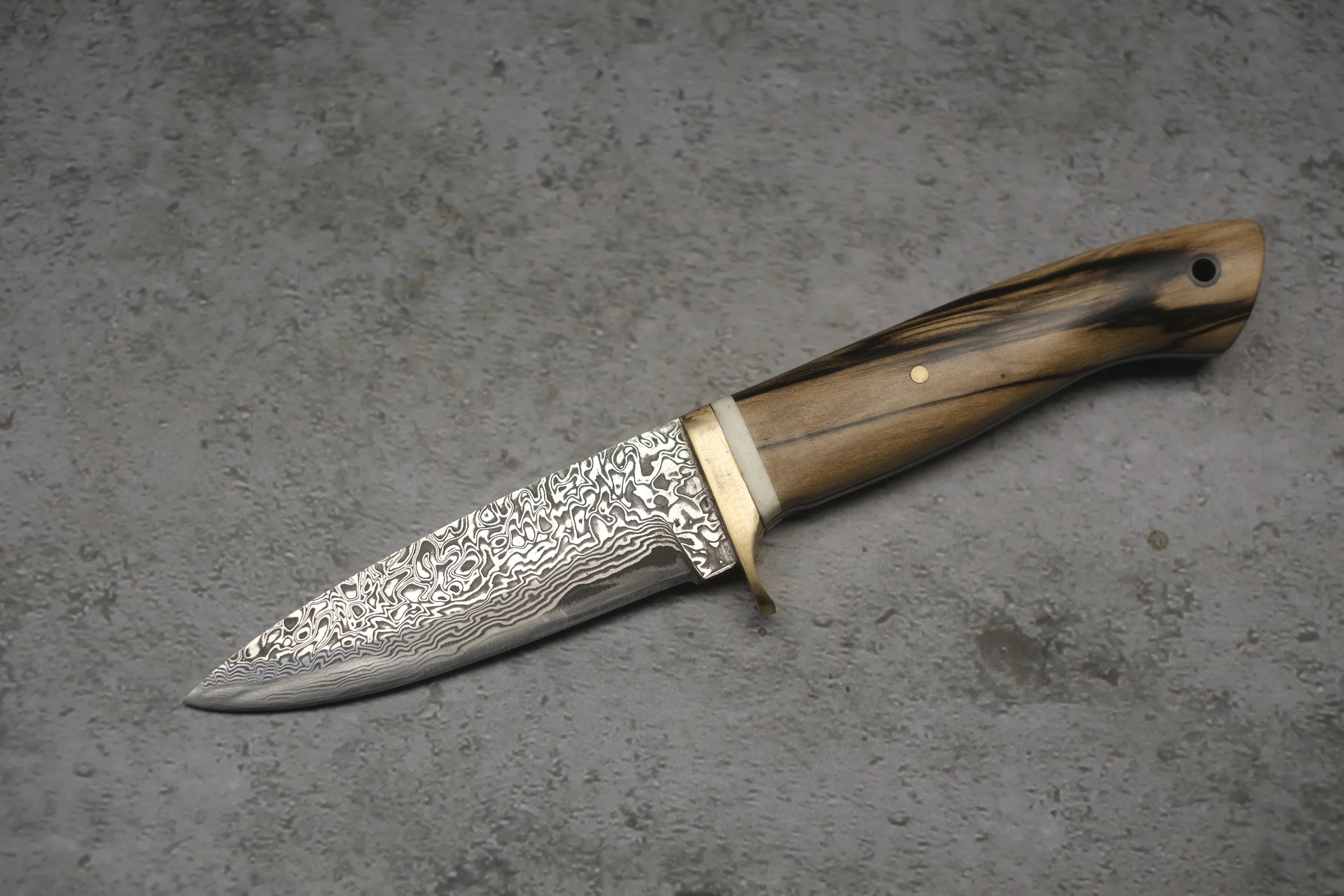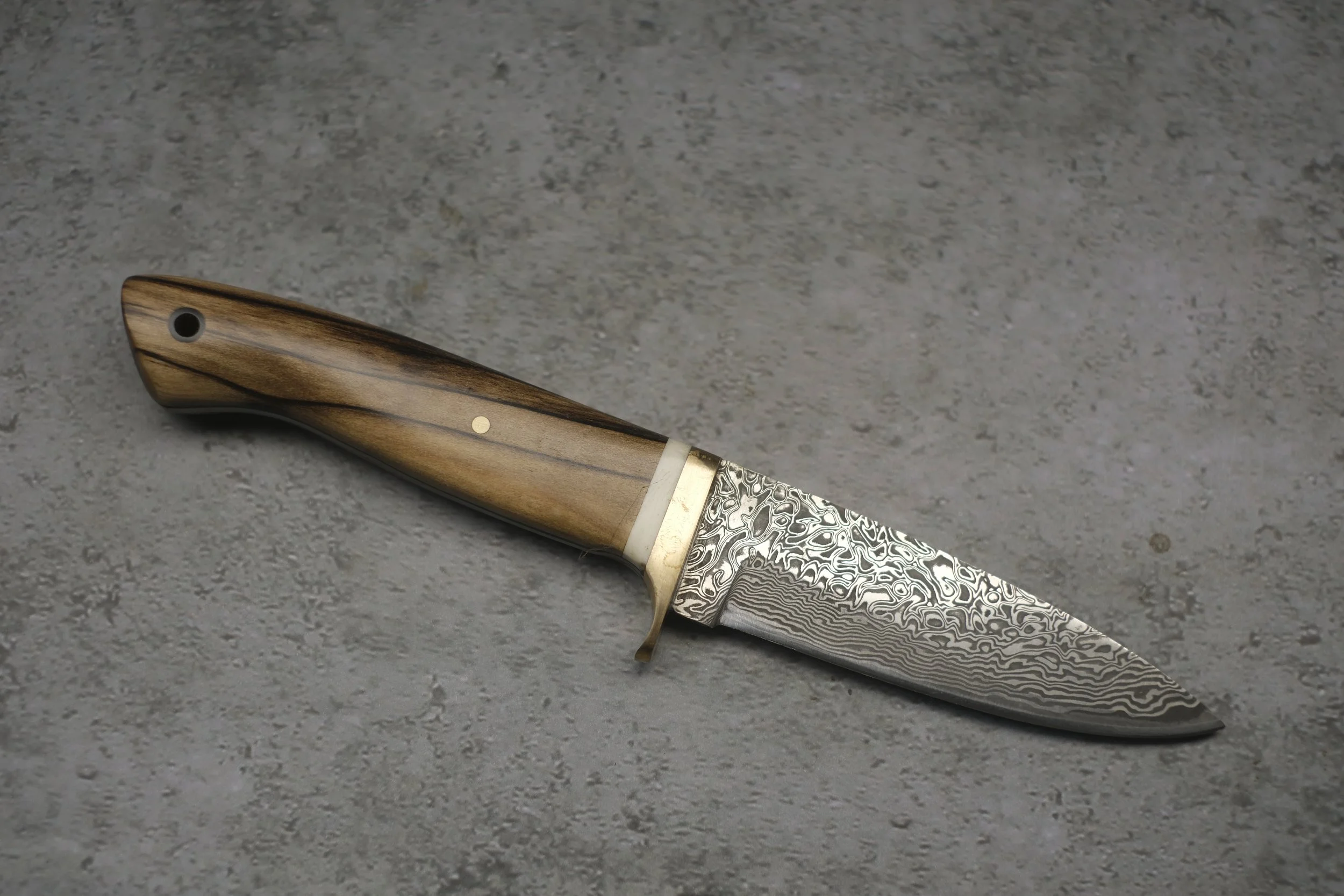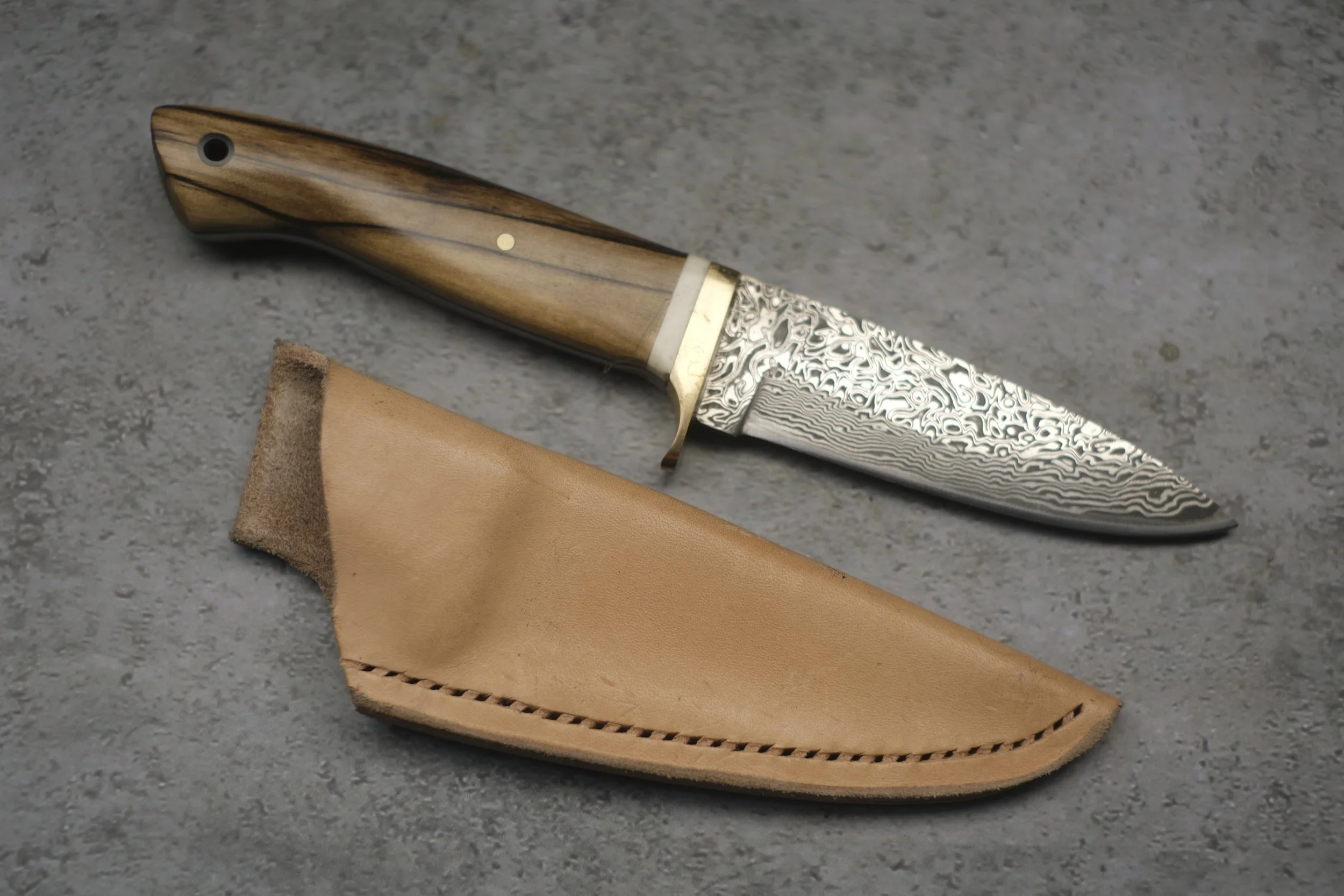Types of Steel we use
1080 High-carbon steel is renowned for its exceptional hardness and ability to hold a very sharp edge, making it an excellent choice for knives that require durability and precision in cutting. With proper care, high-carbon steel provides longevity and reliable performance, though it does require maintenance to prevent rust.
14C28N stainless steel, developed by Sandvik, combines edge retention with impressive corrosion resistance, making it ideal for kitchen knives that encounter moisture frequently. Its balanced properties allow it to sharpen easily, making it both durable and user-friendly.
AEB-L stainless steel, originally developed for razor blades, offers a unique combination of toughness and fine edge stability. This steel is resistant to chipping and retains sharpness well, making it perfect for knives requiring precision and durability. Each of these steels brings unique advantages, providing versatility and performance for different types of knife users.
Our Handle material
Stabilizing timber is an essential process for creating durable, resilient knife handles, especially with softer or porous woods. Using a stabilizing resin like Cactus Juice, the process begins by placing the timber in a vacuum chamber. Under intense vacuum pressure, the air within the wood is drawn out, creating a void in the wood's pores. Once the vacuum is released, the Cactus Juice resin is drawn deeply into the wood, filling the empty spaces and reinforcing the timber structure. The resin-saturated wood is then cured in an oven, where the heat hardens the resin, permanently strengthening the wood fibers. This process not only increases the wood’s stability and resistance to moisture but also enhances its durability, making it ideal for knife handles that will stand up to daily use. Stabilized timber handles retain the wood’s natural beauty while providing the resilience needed for long-lasting performance.



